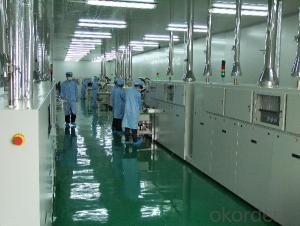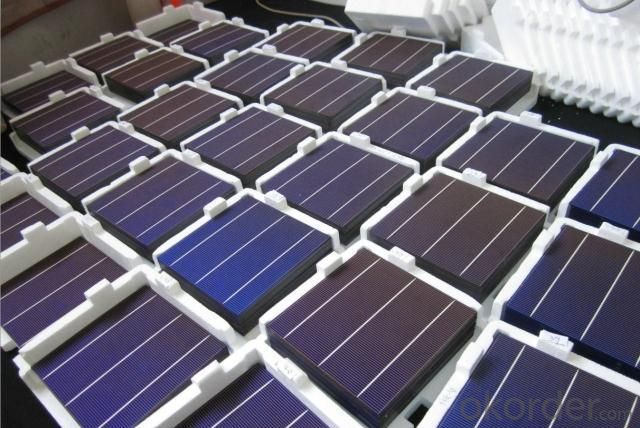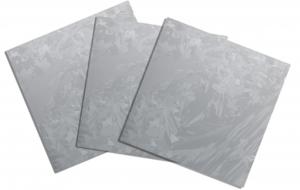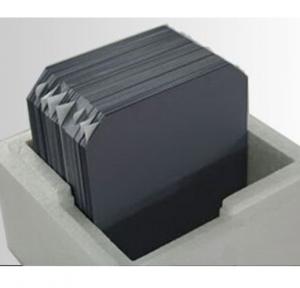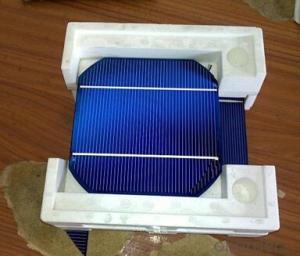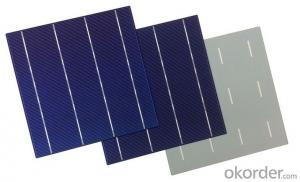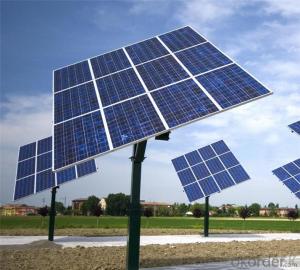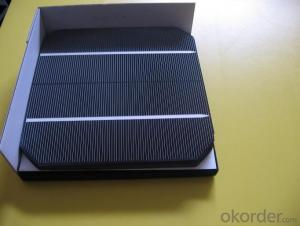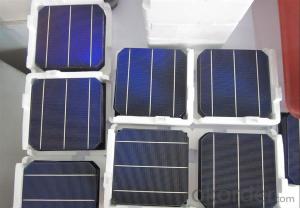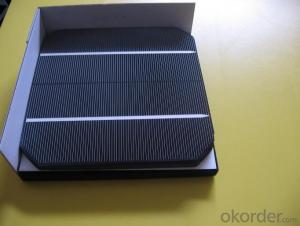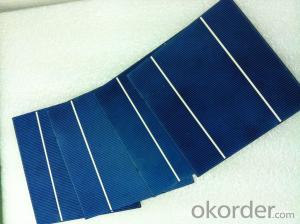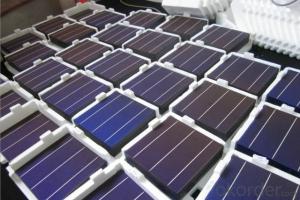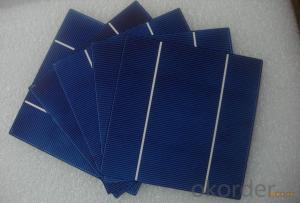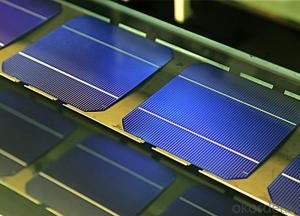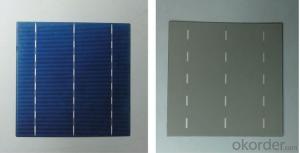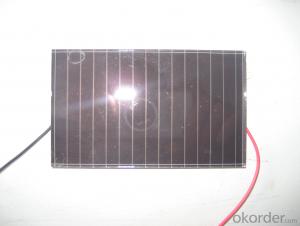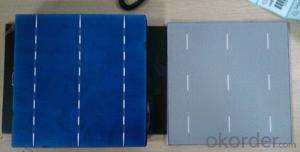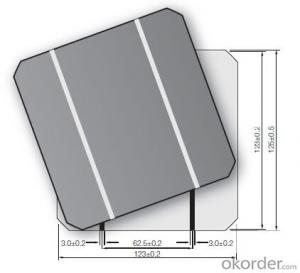Heterojunction Silicon Wafer Solar Cells - High Quality A Grade Polycrystalline 5V 15.6% Solar Cell
- Loading Port:
- Shanghai
- Payment Terms:
- TT OR LC
- Min Order Qty:
- 1000 pc
- Supply Capability:
- 100000 pc/month
OKorder Service Pledge
OKorder Financial Service
You Might Also Like
Specifications
hot sale solar cell
1.16.8%~18.25% high efficiency
2.100% checked quality
3.ISO9001/ISO14001/TUV/CE/UL
4.stable performance
We can offer you the best quality products and services, don't miss !
POLY6'(156*156)
Polycrystalline Silicon Solar cell
Physical Characteristics
Dimension: 156mm×156mm±0.5mm
Diagonal: 220mm±0.5mm
Thickness(Si): 200±20 μm
Front(-) Back(+)
Blue anti-reflecting coating (silicon nitride); Aluminum back surface field;
1.5mm wide bus bars; 2.0mm wide soldering pads;
Distance between bus bars: 51mm . Distance between bus bars :51mm .
Electrical Characteristics
Efficiency(%) | 18.00 | 17.80 | 17.60 | 17.40 | 17.20 | 16.80 | 16.60 | 16.40 | 16.20 | 16.00 | 15.80 | 15.60 |
Pmpp(W) | 4.33 | 4.29 | 4.24 | 4.19 | 4.14 | 4.09 | 4.04 | 3.99 | 3.94 | 3.90 | 3.86 | 3.82 |
Umpp(V) | 0.530 | 0.527 | 0.524 | 0.521 | 0.518 | 0.516 | 0.514 | 0.511 | 0.509 | 0.506 | 0.503 | 0.501 |
Impp(A) | 8.159 | 8.126 | 8.081 | 8.035 | 7.990 | 7.938 | 7.876 | 7.813 | 7.754 | 7.698 | 7.642 | 7.586 |
Uoc(V) | 0.633 | 0.631 | 0.628 | 0.625 | 0.623 | 0.620 | 0.618 | 0.617 | 0.615 | 0.613 | 0.611 | 0.609 |
Isc(A) | 8.709 | 8.677 | 8.629 | 8.578 | 8.531 | 8.478 | 8.419 | 8.356 | 8.289 | 8.220 | 8.151 | 8.083 |
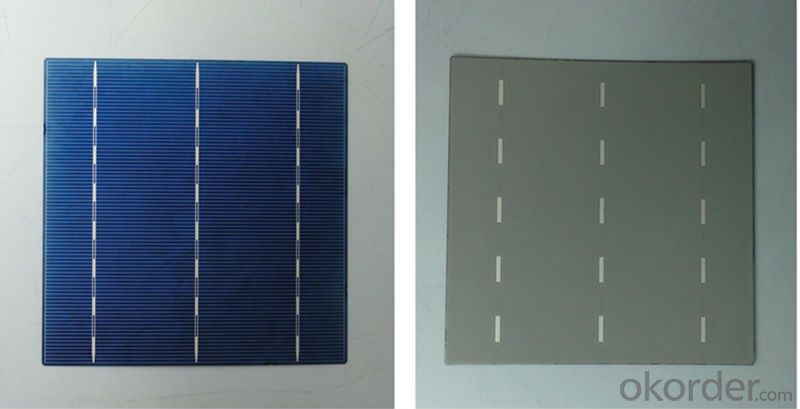
MONO5'(125*125mm)165
Monocrystalline silicon solar cell
Physical Characteristics
Dimension: 125mm×125mm±0.5mm
Diagonal: 165mm±0.5mm
Thickness(Si): 200±20 μm
Front(-) Back(+)
Blue anti-reflecting coating(silicon nitride); Aluminum back surface field;
1.6mmwide bus bars; 2.5mm wide soldering pads;
Distance between bus bars: 61mm . Distance between bus bars :61mm .
Electrical Characteristics
Efficiency(%) | 19.40 | 19.20 | 19.00 | 18.80 | 18.60 | 18.40 | 18.20 | 18.00 | 17.80 | 17.60 | 17.40 | 17.20 |
Pmpp(W) | 2.97 | 2.94 | 2.91 | 2.88 | 2.85 | 2.82 | 2.79 | 2.76 | 2.73 | 2.70 | 2.67 | 2.62 |
Umpp(V) | 0.537 | 0.535 | 0.533 | 0.531 | 0.527 | 0.524 | 0.521 | 0.518 | 0.516 | 0.515 | 0.513 | 0.509 |
Impp(A) | 5.531 | 5.495 | 5.460 | 5.424 | 5.408 | 5.382 | 5.355 | 5.328 | 5.291 | 5.243 | 5.195 | 4.147 |
Uoc(V) | 0.637 | 0.637 | 0.636 | 0.635 | 0.633 | 0.630 | 0.629 | 0.629 | 0.628 | 0.626 | 0.626 | 0.625 |
Isc(A) | 5.888 | 5.876 | 5.862 | 5.848 | 5.839 | 5.826 | 5.809 | 5.791 | 5.779 | 5.756 | 5.293 | 5.144 |
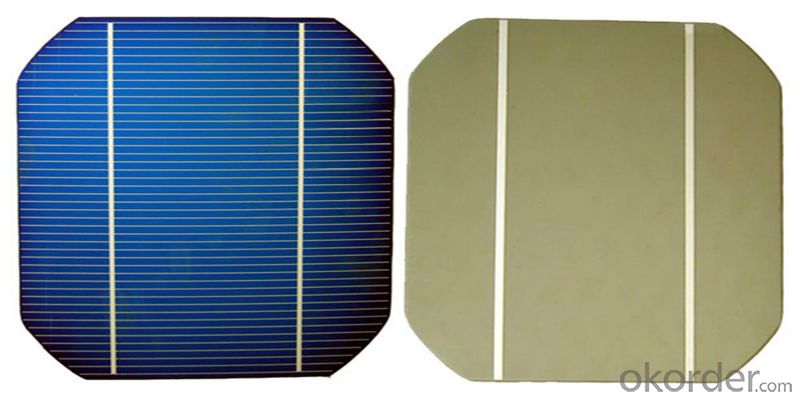
FAQ:
Q:How can i get some sample?
A:Yes , if you want order ,sample is not a problem.
Q:How about your solar panel efficency?
A: Our product efficency around 17.25%~18.25%.
Q:What’s the certificate you have got?
A: we have overall product certificate of ISO9001/ISO14001/CE/TUV/UL
- Q: How are solar silicon wafers tested for thermal properties?
- Solar silicon wafers are typically tested for thermal properties by subjecting them to a series of controlled heating and cooling cycles. This process involves placing the wafers in a controlled environment and gradually increasing the temperature while monitoring their response. The thermal conductivity, coefficient of thermal expansion, and other relevant parameters are measured to assess the wafers' thermal properties. Additionally, specialized equipment like thermal imaging cameras may be used to detect any hotspots or temperature variations across the wafer's surface during testing.
- Q: P type and N type monocrystalline silicon chip difference?
- The N type is an electronic conduction, and the P type is a hole conduction
- Q: What is the role of a passivation layer in a solar silicon wafer?
- The role of a passivation layer in a solar silicon wafer is to reduce surface recombination and improve the efficiency of the solar cell. It acts as a protective coating that prevents unwanted chemical reactions, minimizes surface defects, and enhances the electrical properties of the silicon wafer. This passivation layer helps to increase the overall performance and lifespan of the solar cell.
- Q: Can solar silicon wafers be used in desert regions?
- Yes, solar silicon wafers can be used in desert regions. In fact, desert regions are ideal for solar energy generation due to their abundant sunlight and high solar irradiance. The dry and arid climate in deserts also helps to maintain the efficiency of solar panels by reducing the moisture and dust accumulation on the surface of the silicon wafers.
- Q: What is a silicon wafer cutting edge material?
- Because the cutting edge material particles have very sharp edges, and the hardness is far greater than the silicon rod or silicon ingot hardness, so the silicon rod or silicon ingot and steel wire contact area gradually by the cutting edge material particle grinding off, so as to achieve the purpose of cutting.
- Q: What is the price of monocrystalline silicon
- The current price of silicon wafer recycling depends on the quality of the silicon wafer.
- Q: How is a junction box integrated into a solar silicon wafer?
- A junction box is typically integrated into a solar silicon wafer through a process called soldering. The wires from the junction box are connected to the contact points on the surface of the wafer using soldering techniques. This allows for the efficient transfer of electricity generated by the solar panel to the external circuitry.
- Q: How are solar silicon wafers protected from static electricity damage?
- Solar silicon wafers are protected from static electricity damage through various measures such as grounding the equipment and personnel, using anti-static packaging materials, employing ionization techniques to neutralize static charges, and implementing proper handling procedures to minimize the risk of electrostatic discharge.
- Q: What is the expected efficiency improvement for tandem quantum dot-silicon solar silicon wafers?
- The expected efficiency improvement for tandem quantum dot-silicon solar silicon wafers is significant. These wafers have the potential to achieve higher efficiency by combining the advantages of both quantum dot and silicon technologies. While the exact improvement may vary depending on various factors, studies and experiments have shown that tandem quantum dot-silicon solar silicon wafers can potentially achieve efficiency gains of up to 50% compared to traditional silicon wafers.
- Q: What is the role of texturing in solar silicon wafers?
- The role of texturing in solar silicon wafers is to enhance light absorption efficiency by creating a rough surface that reduces reflection and allows for better capture of sunlight.
Send your message to us
Heterojunction Silicon Wafer Solar Cells - High Quality A Grade Polycrystalline 5V 15.6% Solar Cell
- Loading Port:
- Shanghai
- Payment Terms:
- TT OR LC
- Min Order Qty:
- 1000 pc
- Supply Capability:
- 100000 pc/month
OKorder Service Pledge
OKorder Financial Service
Similar products
Hot products
Hot Searches
Related keywords
